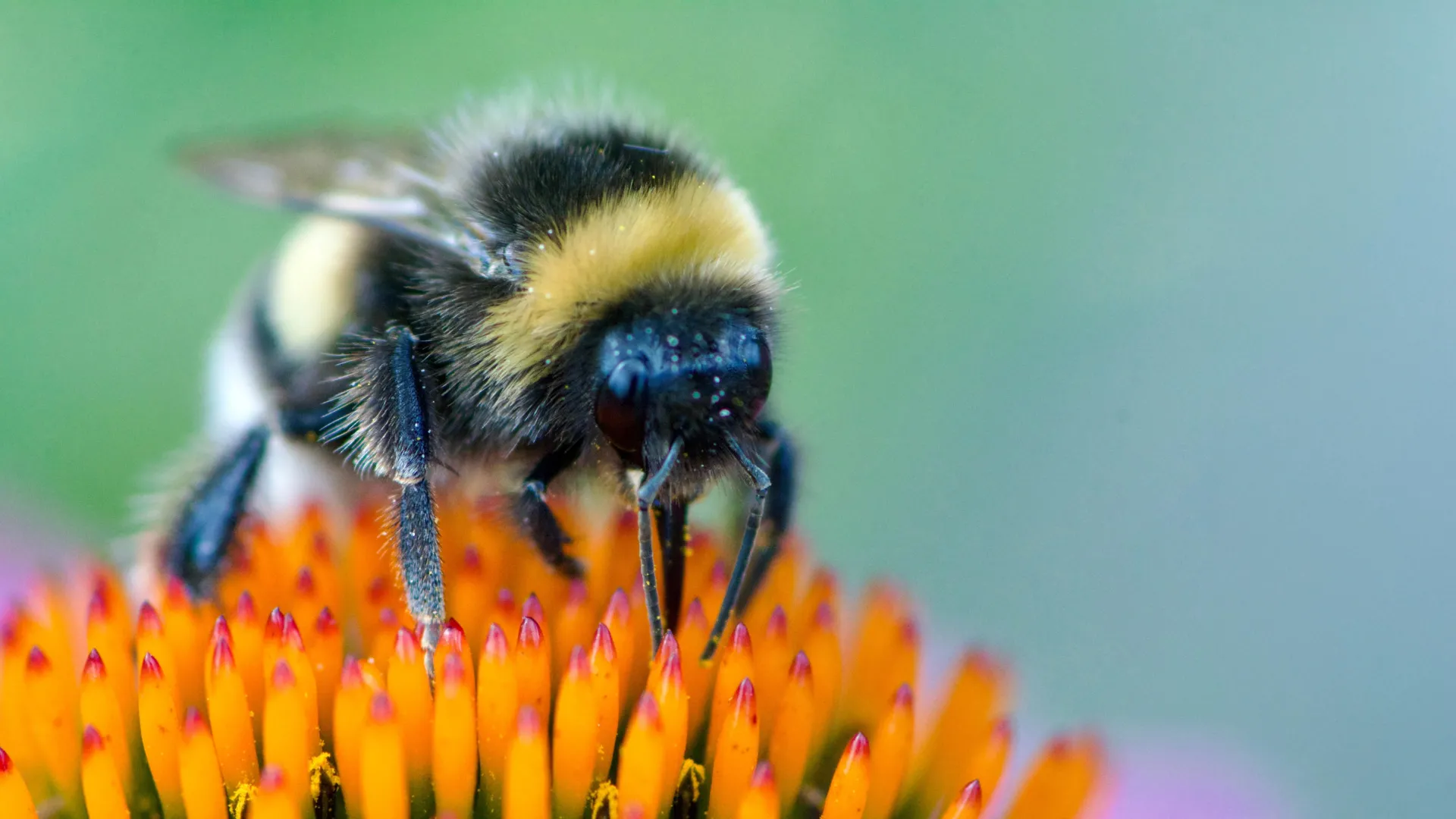Scientists shocked as bumblebees learn to read simple “Morse code”
Bumblebees have cracked the code of time, revealing big-brain abilities inside their tiny heads.
- Date:
- November 12, 2025
- Source:
- Queen Mary University of London
- Summary:
- In a first-of-its-kind study, scientists found that bumblebees can tell the difference between short and long light flashes, much like recognizing Morse code. The insects learned which signal led to a sweet reward, demonstrating an unexpected sense of timing. This ability may stem from a fundamental neural process, suggesting that even tiny brains have complex time-tracking mechanisms relevant to evolution and AI.
- Share:

Researchers at Queen Mary University of London have discovered that an insect, the bumblebee Bombus terrestris, can choose where to gather food by recognizing how long a visual signal lasts.
In Morse code, short flashes or "dots" stand for the letter "E," while longer flashes or "dashes" represent the letter "T." Until now, only humans and a few other vertebrates, including pigeons and macaques, were known to distinguish between these two durations.
Training Bees to Recognize Light Durations
PhD student Alex Davidson and his supervisor, Dr. Elisabetta Versace, Senior Lecturer in Psychology at Queen Mary, led the research team. They designed a special maze to test whether bees could link different light durations to rewards. Each bee was trained to find a sugar treat at one of two flashing circles, which either emitted a short flash ("dot") or a long flash ("dash"). When the short flash led to a sugar reward, the longer flash indicated a bitter substance that bees prefer to avoid.
To ensure the bees were using timing rather than location, the researchers changed the positions of the two flashing circles in each section of the maze. Once the bees consistently flew toward the light associated with sugar, the team removed the sugar to see if the insects would still choose based on flash duration instead of scent or other cues.
Bees Learn Through Timing, Not Position
The results showed that most bees went directly to the light with the duration previously linked to sugar, regardless of where it was positioned. This confirmed that the bees had learned to differentiate between short and long flashes of light.
Alex Davidson said: "We wanted to find out if bumblebees could learn the difference between these different durations, and it was so exciting to see them do it."
Time Perception in Tiny Brains
"Since bees don't encounter flashing stimuli in their natural environment, it's remarkable that they could succeed at this task," Davidson added. "The fact that they could track the duration of visual stimuli might suggest an extension of a time processing capacity that has evolved for different purposes, such as keeping track of movement in space or communication."
"Alternatively, this surprising ability to encode and process time duration might be a fundamental component of the nervous system that is intrinsic in the properties of neurons. Only further research will be able to address this issue."
Exploring the Biology of Timekeeping
Scientists still know little about how bees or other animals measure short durations of time. The known systems that regulate daily cycles (circadian rhythms) or seasonal patterns operate too slowly to explain this precise timing ability for flashes that differ by fractions of a second.
Some theories propose that animals may have one or more internal clocks operating at different scales. Now that this ability has been demonstrated in insects, researchers can test how such timing mechanisms function in miniature brains that are smaller than a cubic millimeter.
What This Means for Understanding Intelligence
Dr. Versace explained: "Many complex animal behaviors, such as navigation and communication, depend on time processing abilities. It will be important to use a broad comparative approach across different species, including insects, to shed light on the evolution of those abilities. Processing durations in insects is evidence of a complex task solution using minimal neural substrate. This has implications for complex cognitive-like traits in artificial neural networks, which should seek to be as efficient as possible to be scalable, taking inspiration from biological intelligence."
Story Source:
Materials provided by Queen Mary University of London. Note: Content may be edited for style and length.
Journal Reference:
- Alexander Davidson, Ishani Nanda, Anita Ong, Lars Chittka, Elisabetta Versace. Duration discrimination in the bumblebee Bombus terrestris. Biology Letters, 2025; 21 (11) DOI: 10.1098/rsbl.2025.0440
Cite This Page: